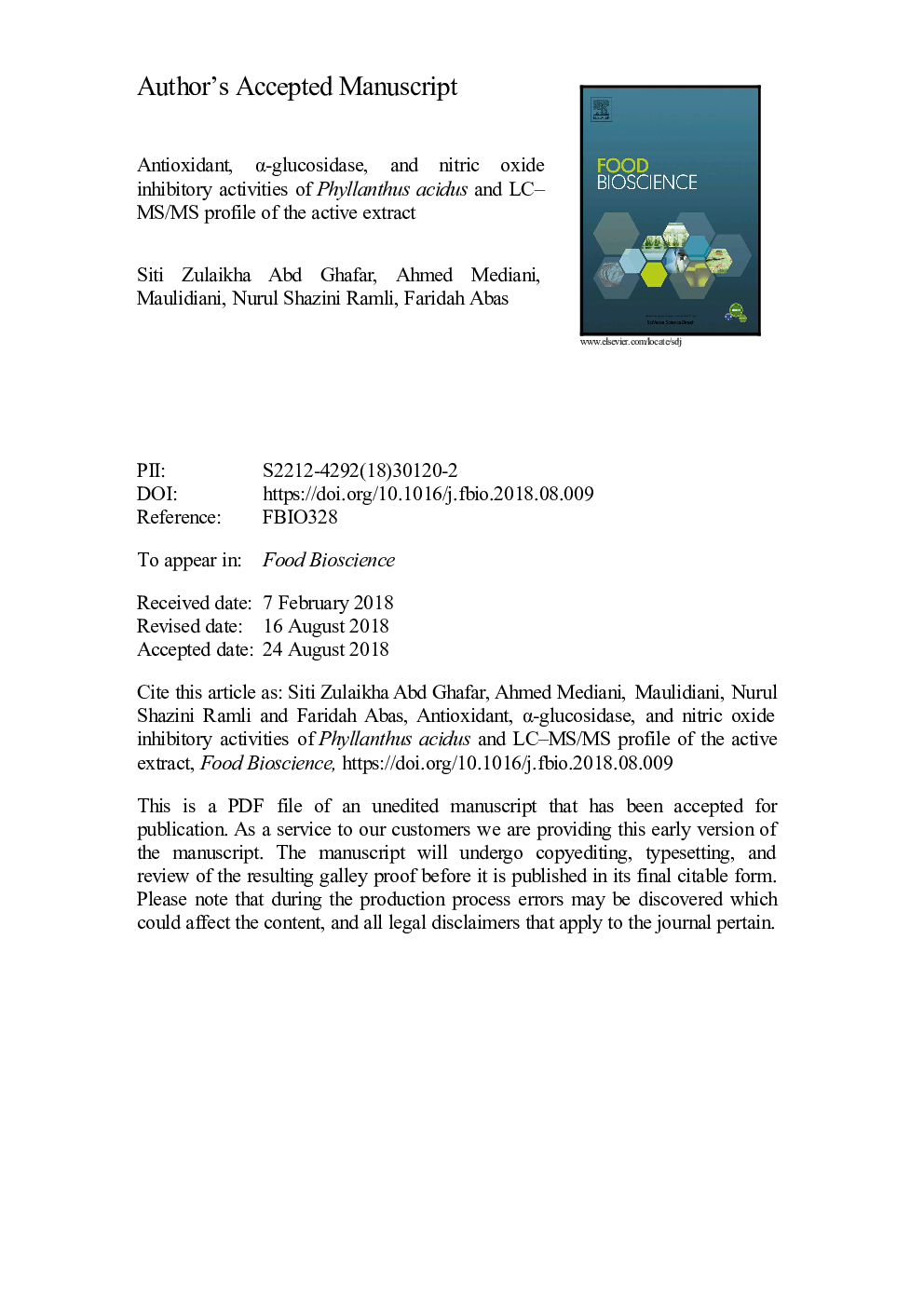| Article ID | Journal | Published Year | Pages | File Type |
|---|---|---|---|---|
| 10999812 | Food Bioscience | 2018 | 29 Pages |
Abstract
The inhibition of α-glucosidase and nitric oxide, and the antioxidant activities of two parts (leaf and fruit) of Phyllanthus acidus (an Asian gooseberry) extracted with various ethanol ratios (0%, 50% and 100%) were studied. The compounds that were associated with the three bioactivities in the P. acidus extracts were identified using ultra-high-performance liquid chromatography tandem mass spectrometry, UHPLC-MS/MS. The results showed that extraction of the leaves with 50% ethanol gave the most active extract with the lowest IC50 value for α-glucosidase at 1.5â¯Âµg/mL, moderate nitric oxide scavenging and inhibitory activities (IC50 =160 and 180â¯Âµg/mL, respectively), and the highest total phenolic content with 33â¯mg GAE/g extract. The 50% ethanol extract of the fruit showed the highest total phenolic content, DPPH free radical scavenging, nitric oxide scavenging, α-glucosidase and nitric oxide inhibitory activities with values of 9.4â¯mg GAE/g extract, 48%, 49%, 2.4â¯Âµg/mL and 43%, respectively. In total, 30 compounds were tentatively identified in the 50% ethanol extract of P. acidus leaf, which included derivatives of quercetin, kaempferol, epicatechin, coumaric, and cinnamic acids. Hence, P. acidus extracts that have antioxidant properties, α-glucosidase and nitric oxide inhibitory activities could be potential candidates for the treatment of diabetes and inflammation associated diseases.
Related Topics
Physical Sciences and Engineering
Chemical Engineering
Bioengineering
Authors
Siti Zulaikha Abd Ghafar, Ahmed Mediani, Maulidiani Maulidiani, Nurul Shazini Ramli, Faridah Abas,
